As the earth moves around the sun, it passes through the dust and debris left by comets and asteroids. These fragments produce a meteor shower -- probably one of nature's most spectacular displays. Most meteor showers are predictable and repeat each year as the earth crosses certain debris tracks Sometimes, however, the Earth passes through a particularly narrow, dense cluster of debris. This leads to a "meteor storm", where thousands of meteors cross the sky every hour
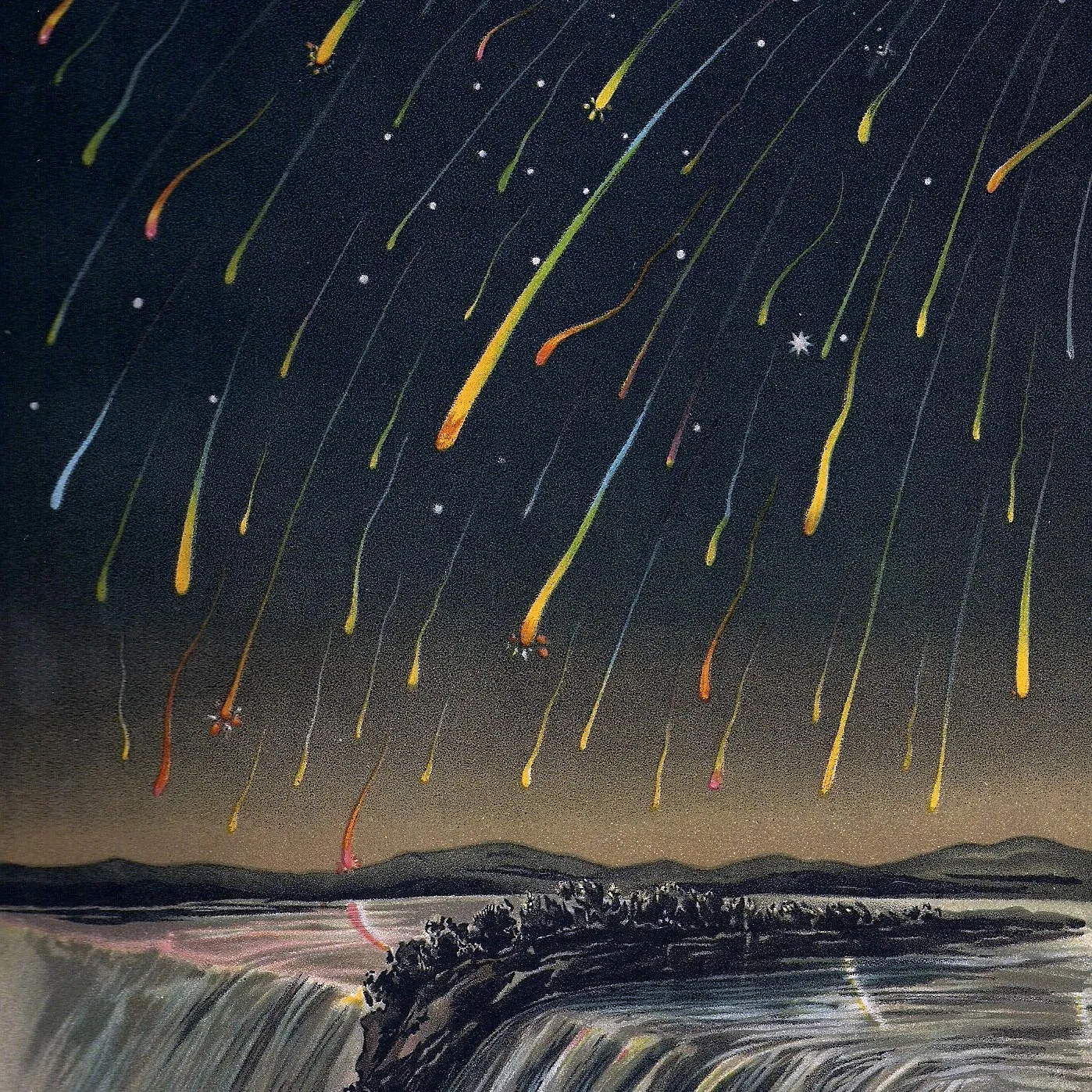
A small meteor shower called tau herculids may bring a meteor storm to observers in the Americas this week. However, although some websites promise that "this is the most powerful meteor storm in generations", astronomers are cautious.

Introducing comet SW3
The story begins with a comet named 73p/schwassmann-wachmann 3 (comet SW3 for short). It was first discovered in 1930. It caused a weak meteor shower called tau herculids. Now it seems to radiate from about 10 degrees away from the bright star Arcturus.
In 1995, comet SW3 suddenly lit up unexpectedly. In a few months, some outbreaks were observed. The comet broke up catastrophically, releasing a lot of dust, gas and debris.
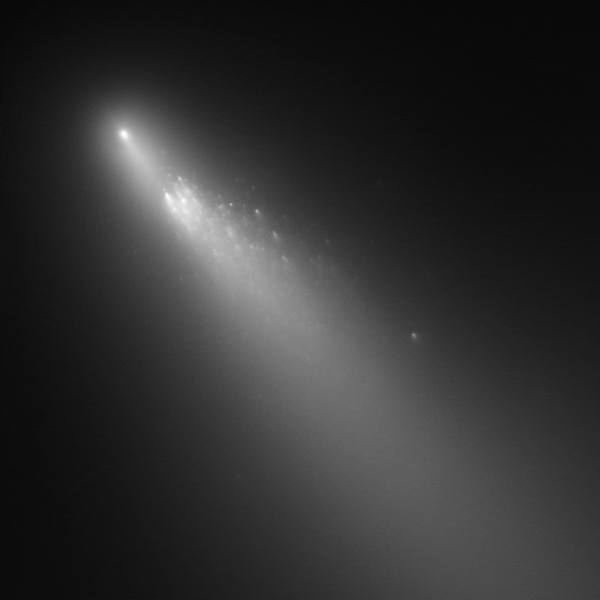
By 2006 (after two orbits), comet SW3 had further disintegrated into several bright fragments, accompanied by many smaller fragments.
Is the earth in the process of a collision?
This year, the earth will cross the orbit of comet SW3 at the end of May. Detailed computer modeling shows that the debris has spread along the orbit of the comet, just like the huge tiny tentacles in space.
Has the debris spread enough to reach the earth? It depends on how much debris was ejected in 1995 and how fast it was thrown out when the comet disintegrated. But the pieces of dust and debris are so small that we can't see them until we hit them. So how can we gain insight into what may happen next week?
Will history repeat itself?
Researchers' current understanding of the meteor shower began 150 years ago with an event very similar to the story of SW3.
In 1772, a comet named 3d/biela was discovered. It is a short period comet, just like SW3, which returns every 6.6 years.
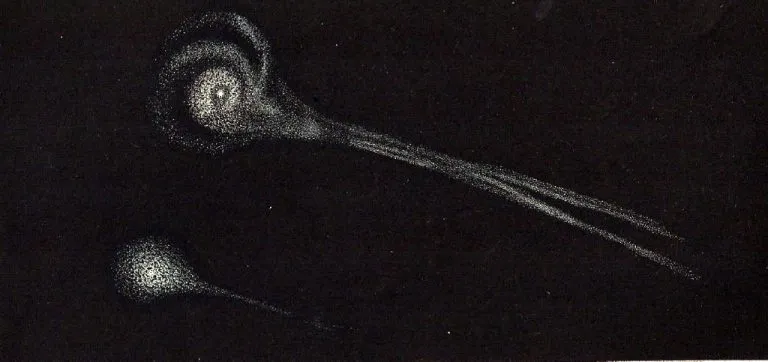
In 1846, the comet began to behave strangely. Observers saw that the front of the comet had been split in two. Some people described a "comet material arch" between the two comets.
By the time the comet returned in 1852, it was clear that the two fragments had separated, and the brightness of both was fluctuating unpredictably.
The comet never appeared again. But in late November of 1872, an unexpected meteor storm appeared in the northern sky, shocking the observers with the speed of more than 3000 meteors per hour.
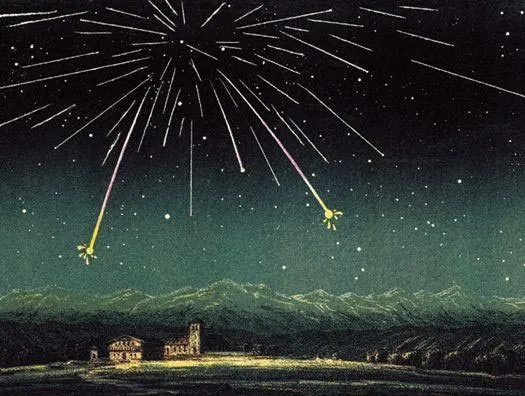
The meteor storm occurred when the earth passed through the orbit of 3d/biela: it was the place where the comet itself should have appeared two months ago. The second storm, weaker than the first, occurred in 1885, when the earth again encountered the debris of comets.
3d/biela has disintegrated into ruins, but its two huge meteor storms have become a suitable waiting place. A dying comet disintegrates before our eyes, and the associated meteor shower is usually almost imperceptible in the background noise. Will we see history repeat itself on comet SW3?
What does this tell tau herculids?
The main difference between the 1872 event and this year's tau herculids is the time when the earth passed through the orbit of the comet. In 1872, a few months after the comet expired, the earth passed through the orbit of Biela, moving the lagging material where the comet would have been.
In contrast, next week's meeting of the debris streams from earth and SW3 occurred a few months before the comet was about to reach the intersection. Therefore, debris needs to spread before comets in order for meteor bursts to occur.
Will the debris spread far enough to meet the earth? Some models show that we will see a strong meteor shower, while others show that debris will fall not far away.
No matter what happens, the observation of the comet rain next week will greatly improve people's understanding of how the comet fragmentation event occurs.
The calculation results show that the earth will cross the orbit of SW3 at about 3 p.m. (Australian Eastern time) on May 31. If the debris reaches far enough ahead for the earth to meet it, tau herculids may erupt, but it will only last for oneortwo hours.
For observers across Australia, around 7 p.m. local time, the tau herculids radiation point is very low in the northern sky.
However, observers in North and South America will be more likely to see a modest display of slow-moving meteors than a huge storm. This will be a good result, but it may be a bit disappointing.
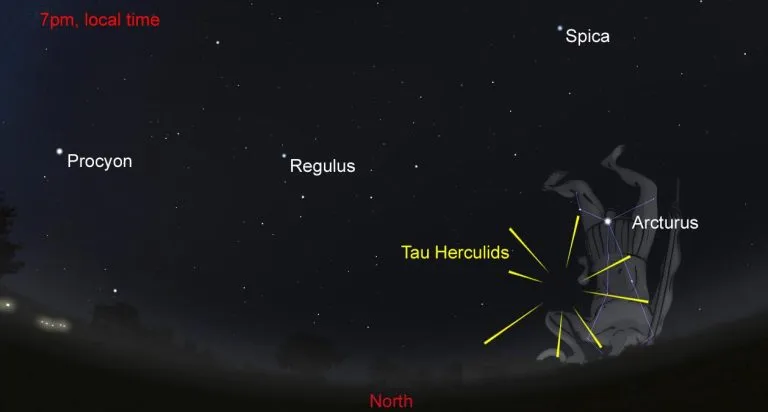
However, this meteor shower may present a truly spectacular performance. Astronomers are traveling all over the world for a rainy day.
The 1995 debris flow is just one of the many debris left by the comet over the past few decades.
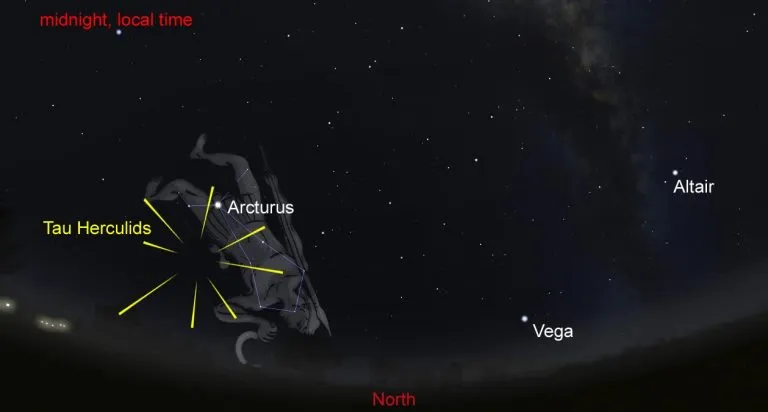
In the early morning of May 31, at about 4 a.m. (Australian Eastern time), the earth will pass through the debris of comet flying around the sun in 1892. That night, around 8 p.m. (AEST) on May 31, the earth will pass through the debris left by the comet of 1897.
However, debris from these visits will disperse over time, so some researchers predict that only a few meteors will appear in our sky.